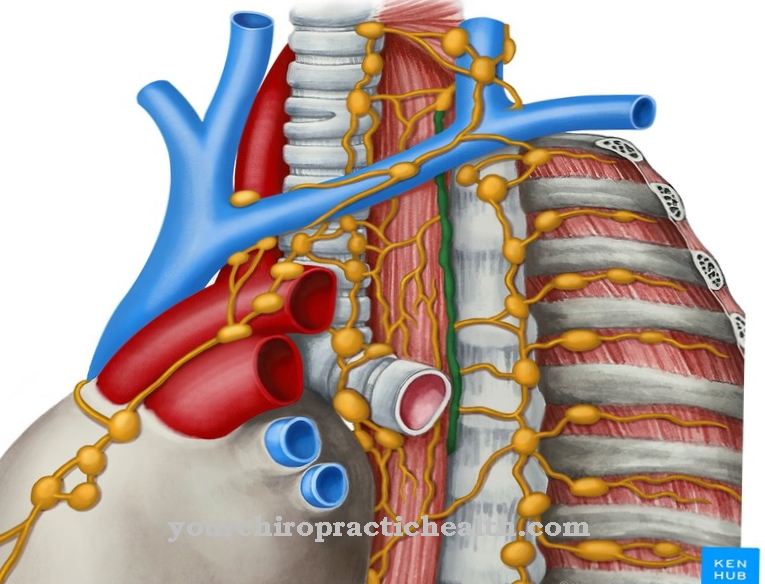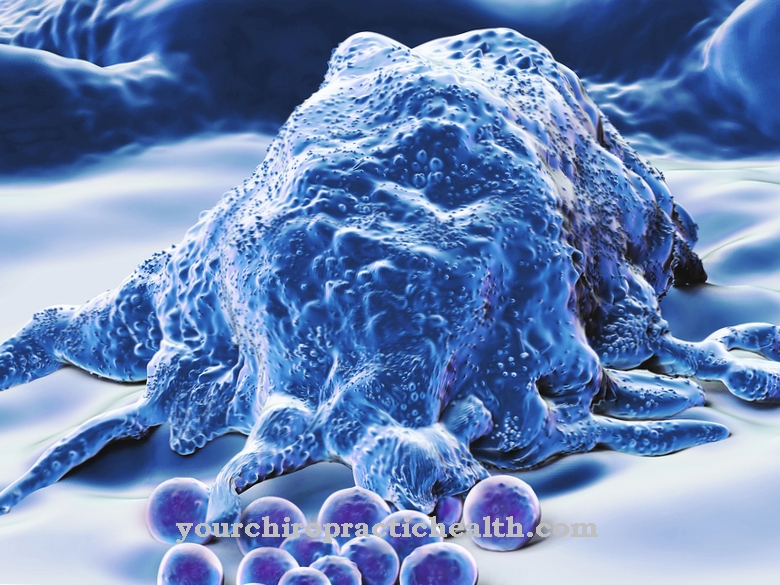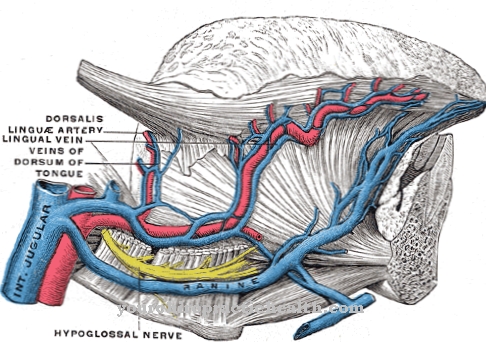The Saddle thumb joint connects the metacarpal bone of the thumb with the large, trapezoidal polygonal bone. As a saddle joint, it allows the two-axis movements of bending / stretching and spreading / angling. In the combination of the two directions of rotation, the thumb saddle joint works almost like a ball joint.
What is the thumb saddle joint?
The thumb saddle joint (Articulatio carpometacarpalis pollicis) creates the connection between the metacarpal bone of the thumb (Os metacarpale primum) and the large polygonal bone (Os trapezium). As a saddle joint, it allows the two directions of rotation, which are perpendicular to one another, bending / stretching and spreading / angling.
The joint is stabilized by several ligaments and one or two muscles are available for each direction of rotation. The long and short extensors (extensor pollicis longus and brevis muscles) act as extensors. As flexors z. Sometimes also muscles that are also responsible for splaying, such as the abductor pollicis brevis muscle. The muscles of the hand are supplied by branches of the ulnar and median nerves.
When the hand is grasped, the thumb saddle joint is particularly heavily stressed, so that many people, especially women after menopause, can experience degenerative changes in the joint. Usually it is an osteoarthritis, which in the case of the thumb saddle joint is called rhizarthrosis.
Anatomy & structure
In contrast to the other metacarpophalangeal joints, the thumb saddle joint is not designed as a ball joint, but corresponds to that of a typical saddle joint, which is optimized for the two directions of rotation bending / stretching and spreading / angling and is designed in principle for the high loads associated with fixed gripping movements . Compared to the other metacarpophalangeal joints, the joint capsule of the thumb saddle joint is relatively elastic, even if ligaments ensure safe movement in the desired direction.
The thumb thus offers the prerequisites for fine motor skills as well as tightly gripping movements. A superficial and a deep arterial arch in the area of the metatarsophalangeal joints supply the hand with oxygen and nutrients. The two arterial arches - also called the palmar arches - arise as side branches of the ulnar arteries and the radial arteries. The thumb saddle joint and its ligaments are mainly supplied by a branch of the deep arterial arch.
Function & tasks
The main task and function of the thumb saddle joint is to enable both fine motor and powerful gripping movements. The opposition of the thumb has a special meaning. Thanks to the two planes of rotation offered by the saddle joint, the thumb is able to exercise the so-called tweezer grip with each of the remaining four fingers.
The tip of the thumb is pressed more or less strongly onto the tip of any finger of the same hand. The tweezers handle can not only be executed with extremely fine motor skills and sensitivity, but also with a strong grip if necessary. The thumb also offers the possibility of supporting the fingers with the necessary grips by closing a fist. The fingers usually hold the weight of the body, which is pulling vertically downwards (acceleration due to gravity), and the thumb prevents the fingers from slipping under forces that act transversely to gravity by means of the fist or implied fist.
The thumb saddle joint is also responsible for the fact that the thumb can rotate a little passively in order to be able to adapt to certain conditions. Active rotation is not possible because there are no muscles available for rotation. However, it cannot be ruled out that active rotation of the thumb is also possible through training at an early age, because a certain combination of the existing muscles could be used for the rotation.
Diseases
The thumb saddle joint is heavily stressed with almost all movements of the thumb, especially with the tweezer grip with ring finger or little finger, because the joint surfaces move against each other and thus significantly smaller surfaces are subjected to higher loads. This can lead to premature abrasion of the articular cartilage and to arthritic changes in the joint. Osteoarthritis of the thumb saddle joint is known as rhizarthrosis.
Rhizarthrosis initially manifests itself in pain when moving, which in the further course of the disease also appear in the resting phase and can cause significant sleep disorders. With advanced rhizarthrosis, movement restrictions occur and often bony appendages form, which can be felt and recognized as deformations from the outside. The bony adhesions can be made directly visible in a special X-ray procedure. Since the emergence of the new SMS culture and smartphone technology, people who excessively use their fingers and thumbs to write SMS or e-mails, to play games or to do other things on their smartphones have suffered from thumb pain.
The phenomenon, which initially mainly appeared in adolescents, arises due to stress on the thumb from unusual movements that occur while writing SMS. The phenomenon, called SMS thumb, is mostly due to tendinitis at the thumb saddle joint or to a corresponding bursitis. With the so-called Finkelstein test, a crunch of the tendon can often be felt in an advanced stage of the SMS thumb.
The thumb is closed in the fist and the hand is then abruptly angled towards the little finger. The extremely painful complaints can quickly become chronic if they are not observed, and the healing process can take a month or more. In very stubborn cases, a small, outpatient incision in the connective tissue of the bursa can bring relief. The thumb can be moved immediately after the procedure.












.jpg)



.jpg)










.jpg)
